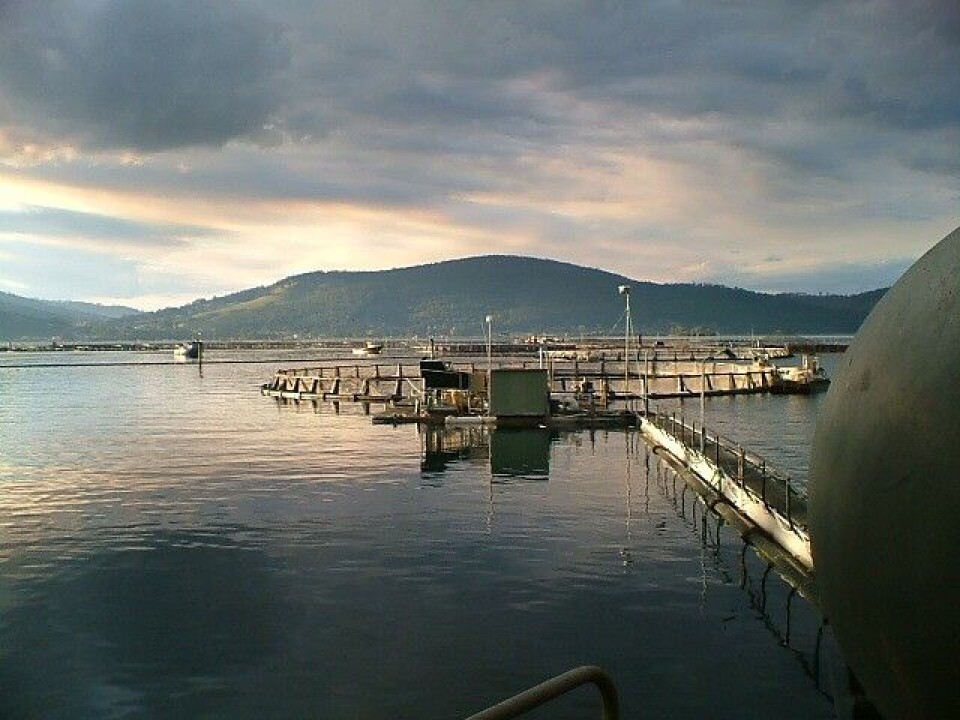
Aussie sets record straight on farmed fish
Opinion
One such piece of information recently appeared in The Australian. And while not all fish farming is created and practiced equally well, fish farmers in Australia can be proud of their industry, as these excerpts from and article by John Newton clearly show;
“It’s time to ditch the negative ideas about farmed fish”, he argues. According to a 2006 prediction by the United Nations Food and Agriculture Organisation, 2010 is the year the world began eating more farmed than wild-caught fish. The figures aren’t out yet, but that’s the way it’s been heading. Aquaculture is the world’s fastest-growing animal food-producing sector, with an average annual growth since 1970 of almost seven per cent.
This may not be such a bad thing. Certainly not according to Dr Brett Glencross of the CSIRO, a world authority on aquaculture nutrition. “I’d rather eat farmed fish than wild fish,” Glencross says. “I know the harvest has been managed and the quality is going to be excellent. You go to a barramundi farm … the animal is corralled into a cage and swims into an automatic stunner, falls into an ice slurry and immediately goes to zero degrees. The same technology is used on a salmon farm. By contrast, you buy a wild-harvest barramundi from a creek in the Northern Territory. The fisher sets a gill net overnight. By the next day, the fish has been dead overnight.
There are basically two main methods of fish farming: mariculture, or farming in the open sea, in which the produce (usually salmon, kingfish, prawns and oysters) is held in cages; and closed tank, or land-based farming, where the fish (usually silver perch, Murray cod, trout and barramundi) are raised in tanks using recirculated water. So, freshness aside, is farmed fish as good for you as wild-caught fish? How about the taste? And is the practice of farming fish environmentally sustainable? Here, we look at the key issues surrounding aquaculture.
What they’re fed: The figure bandied about by aquaculture critics is that it takes 5kg of wild fish to make 1kg of fishmeal (not fish feed- Ed. note). And that’s true, but today Australian fish farmers are using less and less fishmeal. The latest generation of feeds now get down to as low as 15 per cent without impacting on the performance or health of the fish.” So what is the fishmeal replaced with? “Part of my role is identifying all the micro and macro nutrients in the fish and shrimp diet,” says Glencross. “We look at what they eat naturally and what they eat when they have a compounded diet [a mixture of plant and fishmeal] and then make a comparison.”Of all the fish you get at the supermarket, farmed salmon is still the highest in Omega 3.”
It’s not only environmental concerns that are driving research into using more plant material. Fishmeal is expensive. Blending it with poultry, lupin and canola meals makes financial as well as environmental sense. And, according to Glencross, “we can raise them on high levels of grain and they do just as well as on high levels of fish oil”. According to a 2010 report on aquaculture nutrition, salmon farmers in Australia use, on average, the lowest amount of fishmeal in the world. Roy Palmer, president of the Asia-Pacific chapter of the World Aquaculture Society, says our level of sustainability is ranked in the highest category. “Clearly, other countries have got to work their way up to our level,” he says.
Antibiotics: Glencross cites a 2009 report showing that 10 to 12 tonnes of antibiotics were being used in aquaculture every year. The salmon industry and one of the major feed companies contacted the CSIRO to help resolve this. “Through better nutritional management, antibiotic consumption went from 10 tonnes a year to 100kg,” he says. Now, salmon farmers in Australia only administer antibiotics under veterinary prescription.
Cage chemicals: The practice of using copper-based anti-fouling paint on cages, widely criticised by environmentalists, is being phased out. Dr Geoff Allan, the aquaculture director at NSW’s Port Stephens Fisheries Centre, says that within three years “more than half [Australia’s] fish farms will replace the nets using the anti-fouling paint with plastic ones, or begin using automatic net cleaners, an Australian industry innovation.” Allan says about 25 per cent of farms have already stopped using anti-fouling paint.
Imported products: Currently, 70 per cent of the fish eaten in Australia is imported, most of it farmed – fish such as basa and tilapia and prawns such as vannamei. “At a recent international seafood and health conference I made sure that the celebrity chefs cooking for us had basa and tilapia on the menu,” said Roy Palmer. “They’re priced to feed people seafood – an essential part of the diet – in an economical way.”
So which farmed seafood will you be choosing for your Christmas table? Glencross has crunched the numbers, based on a series of sustainability criteria published by the World Wildlife Fund. He then ranked all the Australian aquaculture industries according to how well they score on those criteria. This is how it panned out: 1. Australian farmed prawns; 2. barramundi; 3. salmon; 4. oysters; 5. freshwater trout.






















































